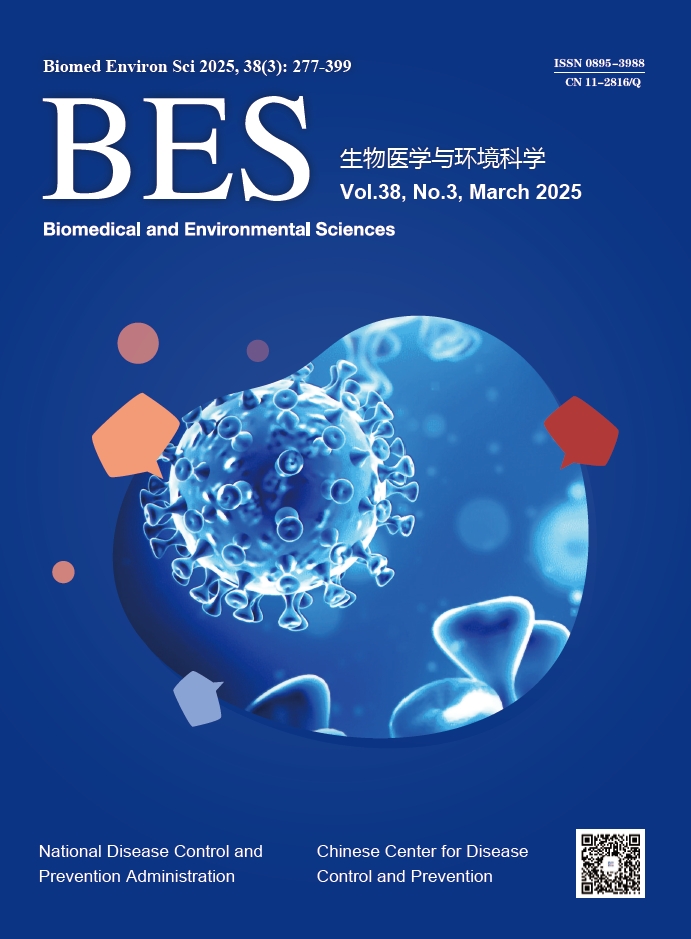-
Lassa fever (LF) is an acute viral hemorrhagic disease caused by Lassa virus (LASV)[1]. LASV is transmitted to humans primarily through direct contact with infected Mastomys rodents, or items polluted by infected rodents[2]. LF is difficult to diagnose without laboratory tests because of its various symptoms, ranging from no symptoms to multiple organ failure and death[2]. West Africa is the traditionally endemic regions for LF, with confirmed and sporadic outbreaks reported in countries, such as Nigeria, Burkina Faso and Guinea[2]. LF cases have also been detected in some non-endemic regions due to international travels[3,4], for example, the United Kingdom found LF imported cases from Mali[5]. This indicates that the countries are exposed to imported risks of LF due to the globalization. The recent publication[6] reported the first imported cases of LF in China, providing important insights into the understanding and control of the emerging infectious disease.
On August 3, 2024, a hospital in Mianyang City, Sichuan Province, reported a case of “suspected LF”[6]. Feng and colleagues[6] then conducted comprehensive diagnostic methods to confirm the LASV strain in the imported case of LF. Test results demonstrated the presence of the LASV in the cerebrospinal fluid (CSF), blood, and urine of the patient. However, all close contacts and environmental samples tested negative, validating the effectiveness of the diagnostic procedures. The study[6] indicated the epidemiological history of the patient and found that the patient is a chef in Guinea, Africa. Feng and colleagues[6] further conducted a homology analysis and found that the LASV strain belonged to lineage IV, showing the highest homology to strains from Sierra Leone. These findings which are important for tracking the origins and spread of the virus.
The study[6] further emphasized the critical role of whole-genome sequencing in analyzing the virus’s genetic characteristics, revealing significant genetic diversity in LASV, especially within the glycoprotein complex (GPC). The study[6] conducted amino acid mutation analysis within the GPC immunogenic epitopes and found that the variability in the GPC among different strains, ranging from 3.9% to 15.1%, which was higher than previously reported for the seven known lineages. The GPC is a vital target for neutralizing antibodies, and mutations in this region can lead to antigenic variation, allowing the virus to evade immune detection. These findings suggested that these mutations may potentially affect immune responses, which are challenges for vaccine development. The presence of these mutations could lead to reduced antibody recognition of the virus. It is necessary to continuously monitor and analyze the genetics of LASV to develop an effective vaccine in the future.
While China successfully controlled this imported case without secondary transmission, the study[6] serves as a stark reminder that the threat of emerging infectious diseases still exists and it needs to implement rational measures to response to imported infectious diseases. In light of finding in the study[6], it is critical to strengthen laboratory capacity for the rapid detection and characterization of LASV. This concludes advanced sequencing technologies and bioinformatic tools to facilitate genetic analysis. In addition, countries should monitor returnee travelers, especially those returning from endemic areas, to reduce the risk of secondary transmission. In addition, the findings in the study[6] also reveal the importance of considering genetic variability in the design of diagnostic assays and therapeutic interventions. With the variation of LASV, diagnostic tools and treatments should be adapted to account for new genetic variants. This is particularly relevant in the context of global travel and trade, which can facilitate the rapid spread of infectious diseases across borders.
In the context of global warming, humans may face great health risks[7,8]. For vector-borne diseases, climate warming may not only affect the spatial and temporal distribution of disease vectors, but may also affect the reproduction and amplification of pathogens in disease vectors, suggesting that countries should design proactive measures to effectively control disease transmission. Firstly, surveillance and early warning systems should be enhanced. It is critical to establish sequencing platforms to monitor pathogen evolution and detect novel variants. In addition, surveillance, combined with human, animal, and environmental data, should be integrated to track zoonotic reservoirs. Secondly, timely detection of persons from endemic areas should be improved to identify cases promptly. Meanwhile, a disease vector surveillance network must be set up to monitor their spatial and temporal distribution promptly. Finally, it is necessary to develop global collaboration and policy coordination. Open-access genomic databases should be built to track cross-border transmission, and financial support should be given to low-income endemic regions to improve diagnostic and treatment capacity.
In conclusion, the study[6] on the first imported case of LF in China provides critical insights of genetic variability of LASV and its implications for immune response and vaccine development. From these findings, the importance of robust laboratory diagnostics, molecular epidemiological analysis, and international collaboration in addressing emerging infectious diseases are recognized. Under climate changing and globalization, the global community may face the threat of emerging pathogens, The study by Feng and colleagues[6] highlights the necessity of a proactive response to curb the spread of infectious diseases.
The First Imported Case of Lassa Fever in China – Implications for Global Health Surveillance
doi: 10.3967/bes2025.029
- Received Date: 2025-03-01
- Accepted Date: 2025-03-20
| Citation: | Qiyong Liu. The First Imported Case of Lassa Fever in China – Implications for Global Health Surveillance[J]. Biomedical and Environmental Sciences, 2025, 38(3): 277-278. doi: 10.3967/bes2025.029 |







 Quick Links
Quick Links
 DownLoad:
DownLoad: